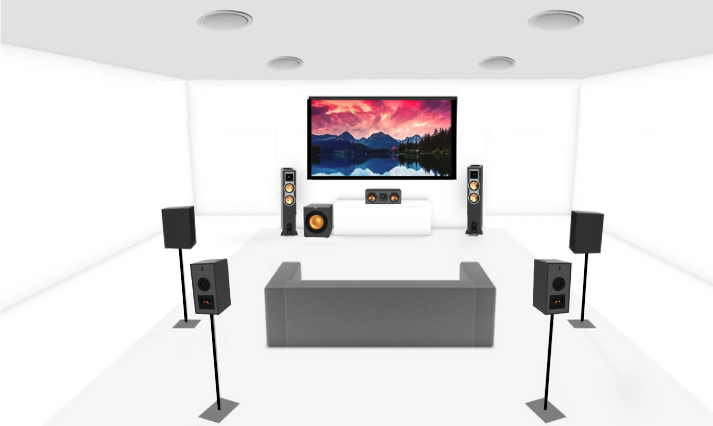This Post may contain affiliate links, when you purchase through links on our site, we may earn an affiliate commission at no extra cost to you. Here’s how it works.
Dolby Atmos has become one of the most talked-about advancements in audio technology, particularly in the realm of home entertainment. From immersive sound experiences in movie theaters to gaming consoles and streaming platforms, Dolby Atmos promises to elevate the way we experience sound. But is it really worth investing in, or is it just another marketing buzzword?
Table of Contents
ToggleIs Dolby Atmos Worth It?
The answer depends largely on your personal preferences, the kind of entertainment you consume, and your budget.
Yes, If:
- You want the best in immersive sound. If you’re someone who values high-quality sound in your movies, games, and music, and you’re willing to invest in a premium setup, Dolby Atmos can deliver an exceptional experience that goes beyond traditional surround sound.
- You have space for it. If you have a dedicated home theater space or a room with appropriate dimensions and ceiling height for ceiling or upward-firing speakers, you’ll get the most out of Dolby Atmos.
- You consume Atmos-optimized content. If you’re a movie buff, gamer, or music lover who frequently watches Atmos-enabled content, you’ll feel the value in investing in the technology.
No, If:
- You have a tight budget. If you’re looking for an entry-level audio solution, Dolby Atmos might not be worth the cost—especially if you don’t have the space or inclination for a full speaker setup.
- You don’t care about sound immersion. If you’re primarily using your system for casual TV watching or audio that doesn’t rely heavily on spatial sound, a traditional sound system may suffice.

How Does Dolby Atmos Work?
Traditional systems like 5.1 or 7.1 have a set number of channels—specific speakers that play certain frequencies of sound. Dolby Atmos, on the other hand, treats sound as individual objects in a three-dimensional space.
For example:
- A helicopter flying overhead would appear to come from above you.
- A car driving from left to right would transition seamlessly across your ears and even overhead.
- A dog barking from the corner of a room would sound as though it is coming from that exact spot.

This is achieved by mixing the sound in a way that accounts for both horizontal and vertical positioning. For home theaters, upward-firing speakers or ceiling speakers replicate the height dimension of the sound.
Usage of Dolby Atmos
1. Cinema and Home Theater
Dolby Atmos creates a dynamic, immersive soundscape that enhances the visual experience. The sound “moves” around the audience in a more realistic way, matching the action on screen. This technology is now widely adopted in major cinemas.
At home, setting up a Dolby Atmos system may involve:
- A Dolby Atmos-enabled AV receiver.
- At least one compatible speaker that can bounce sound off the ceiling (upward-firing).
- A compatible TV, soundbar, or speaker system.
Many modern soundbars are now equipped with Dolby Atmos support, allowing users to experience the technology without needing a full array of speakers.
2. Gaming
Dolby Atmos is increasingly popular in gaming, especially on platforms like Xbox and PC. With the rise of immersive gaming experiences, players need to hear every footstep, shot, or environmental sound in precise detail. Dolby Atmos enhances this by allowing gamers to pinpoint the exact location of sound sources, making the virtual environment more realistic.

Many modern gaming consoles, such as the Xbox Series X and PlayStation 5, support Dolby Atmos for both games and streaming content. Additionally, if you’re using a high-quality gaming headset, some models are equipped with Dolby Atmos support, further enhancing the auditory experience.
3. Streaming and Music
Major streaming services such as Netflix, Apple TV+, and Amazon Prime Video offer a growing catalog of Dolby Atmos-compatible movies and shows. For music lovers, services like Apple Music and Tidal also provide albums in Dolby Atmos, offering a more spatial and rich listening experience.
While the content available for Dolby Atmos audio is still somewhat limited compared to standard surround sound formats, the catalog is expanding steadily, especially as more consumers adopt Atmos-compatible equipment.
Advantages of Dolby Atmos
1. Immersive Sound Experience: The primary benefit of Dolby Atmos is its ability to create an incredibly immersive sound experience. The three-dimensional audio effect can make you feel like you’re part of the action, whether you’re watching a movie, playing a game, or listening to music.
2. Realistic Sound Directionality: In contrast to traditional surround sound, Dolby Atmos offers precise control over the positioning of individual sound objects. For example, you’ll hear birds chirping above you, a plane flying overhead, or the distant rumble of thunder in the sky, making it feel like you’re actually in the environment rather than just observing it.
3. Enhanced Movie Watching: For movie lovers, especially fans of action or sci-fi films, the benefit is clear. Dolby Atmos enhances effects like explosions, car chases, and fight scenes, making them feel more visceral and real. The technology also enhances the subtle sound details, making even quiet, intimate scenes more engaging.
4. Future-Proofing: As more content moves to 4K and beyond, and as VR and AR technologies grow in popularity, Dolby Atmos will likely become more integral to how we experience entertainment. Adopting this technology now can prepare your home entertainment system for future advancements in media.
Disadvantages of Dolby Atmos
- Cost: Setting up a Dolby Atmos system can be expensive, especially if you’re aiming for a full, immersive experience. A high-quality AV receiver, additional speakers, and possibly even ceiling speakers for the most accurate effect can add up.
- Space Requirements: For the full Dolby Atmos effect, you’ll need a fairly large room with proper speaker placement. If you’re using ceiling-mounted speakers, you need a high enough ceiling to avoid sound distortion.
- Limited Content: While the availability of Dolby Atmos content is growing, it’s still relatively limited compared to traditional surround sound. Not all movies, TV shows, games, or music tracks offer Dolby Atmos support, so you may not get the full benefit of your investment on every piece of content.
- Technical Complexity: Setting up a full Dolby Atmos system may require technical expertise, especially for advanced configurations. Many consumers may find the process overwhelming, particularly when it comes to speaker placement, configuration, and calibration.
Conclusion:
Dolby Atmos is undoubtedly an impressive and forward-looking technology. Whether it’s watching a movie, playing video games, or listening to music, Atmos offers a rich, 3D soundstage that traditional sound systems can’t match. However, the technology comes at a price. If you have the space, the budget, and a deep appreciation for cutting-edge audio experiences, Dolby Atmos is most certainly worth it.
